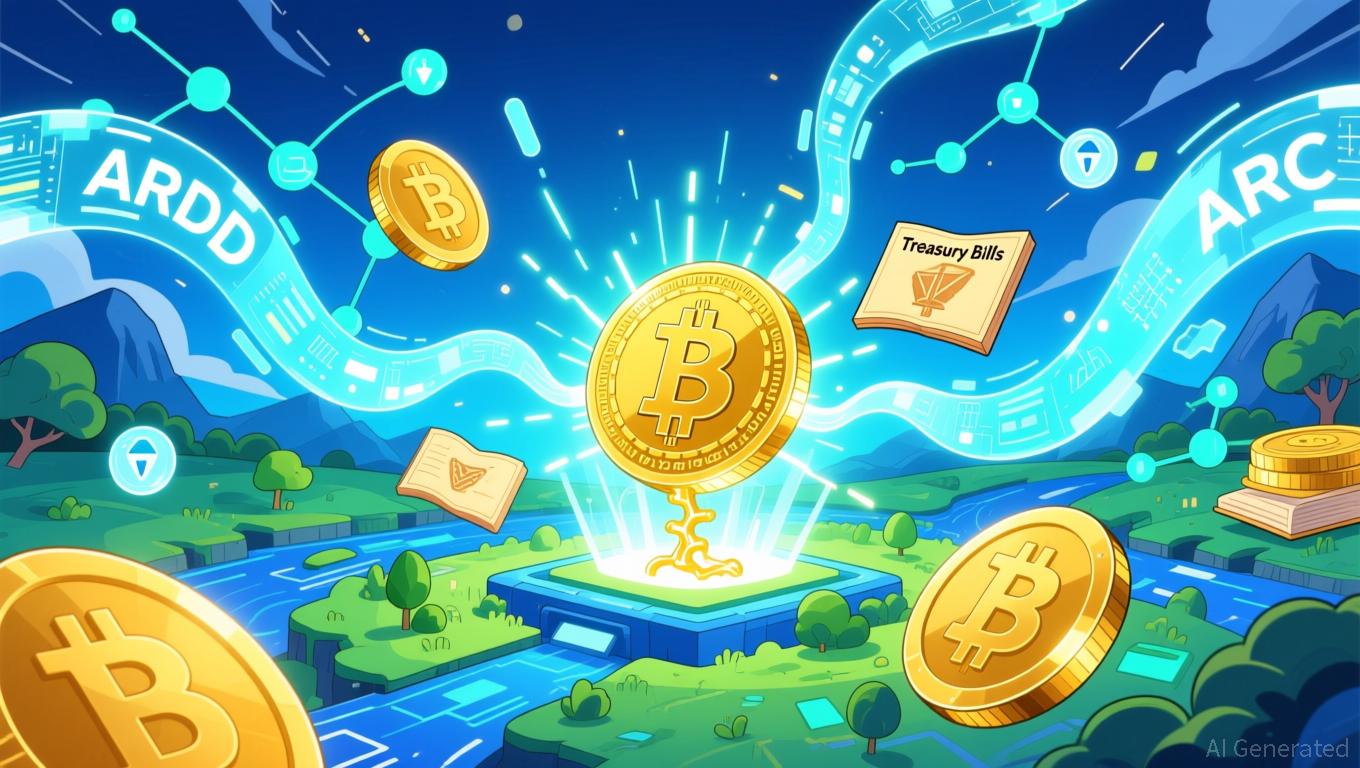India's plan for a sovereign stablecoin disrupts the international cryptocurrency landscape through its dual-rupee approach
- India's government collaborates with Polygon and Anq to develop a sovereign-backed stablecoin (ARC) collateralized by G-Secs and Treasury Bills. - The "Twin-Rupee" model combines RBI's CBDC for settlement with private ARC tokens for transactions, balancing innovation and monetary control. - Polygon's institutional tokenization expertise and Anq's regulatory insights aim to reduce remittance costs and strengthen India's bond market liquidity. - The initiative counters foreign stablecoin risks by anchoring
India's cryptocurrency sector is experiencing significant changes as blockchain companies Polygon and Anq consult with Sanjeev Sanyal, economic advisor to Prime Minister Narendra Modi, to discuss the possibility of a government-backed stablecoin framework
The envisioned stablecoin, provisionally called the Asset Reserve Certificate (ARC), would be entirely backed by Indian government securities (G-Secs) and Treasury Bills,

Polygon, recognized globally for its blockchain scaling solutions, and Anq, a fintech company based in Bangalore, are combining their strengths for this initiative
This project demonstrates India’s careful yet forward-thinking stance on digital finance. While stablecoins such as
As Polygon and Anq continue to develop their proposal, government advisors are reportedly emphasizing the need for clear regulations to encourage adoption while protecting financial stability
Disclaimer: The content of this article solely reflects the author's opinion and does not represent the platform in any capacity. This article is not intended to serve as a reference for making investment decisions.
You may also like
Ethereum News Update: Separating Hype from Reality—Crypto Market Shifts as BlockDAG, Ethereum, and XRP Aim for Leadership by 2026
- BlockDAG's $435M presale and hybrid DAG/Proof-of-Work model position it as a top 2026 growth candidate with 3.5M active miners. - Ethereum faces technical risks like potential death cross but retains 53% stablecoin dominance through JPMorgan/BlackRock partnerships. - XRP shows $2.40 recovery amid Bitcoin ETF inflows but needs sustained confidence to maintain $3.95B derivatives open interest. - Market shifts toward projects with institutional validation (CertiK audits) and real-world adoption (Seattle spo
Brazil's Cryptocurrency Clampdown: Combating Illicit Activity or Hindering Progress?
- Brazil's Central Bank enforces strict crypto rules by Feb 2026, requiring VASPs to obtain authorization or exit the market. - Stablecoin transactions and cross-border transfers are reclassified as foreign exchange operations under $100k capital controls. - $2-7 million capital requirements spark industry criticism, with concerns over stifling competition and compliance timelines. - Mandatory reporting for international transactions aims to combat money laundering, aligning with global standards like EU's
Whales Offload PEPE While Bulls Resist Decline, Forecasting Record High
- A major PEPE whale liquidated a $46M position this week, reflecting broader memecoin market weakness as prices fell 31% year-to-date. - Institutional holders offloaded 0.5% of PEPE holdings amid bearish technical indicators, while some long-term investors predict a new all-time high. - Cross-chain activity highlights volatile memecoin dynamics, with whales shifting focus to ASTER as Coinbase restructures in Texas over regulatory concerns. - Technical analysts warn of continued losses as PEPE forms a "bea

South Korea Seeks to Compete with USD Stablecoins Through Blockchain-Based VAT Reimbursements
- NH NongHyup Bank tests VAT refund system using stablecoin tech with Avalanche , Fireblocks, Mastercard , and Worldpay. - Aims to challenge USD stablecoin dominance by streamlining cross-border refunds via blockchain automation. - South Korea’s FSC plans KRW-pegged stablecoin rules by year-end, restricting non-bank issuers. - Domestic stablecoin transactions exceed $41B, as major banks collaborate on won-backed infrastructure. - Pilot could redefine cross-border payments with faster processing and reduced
